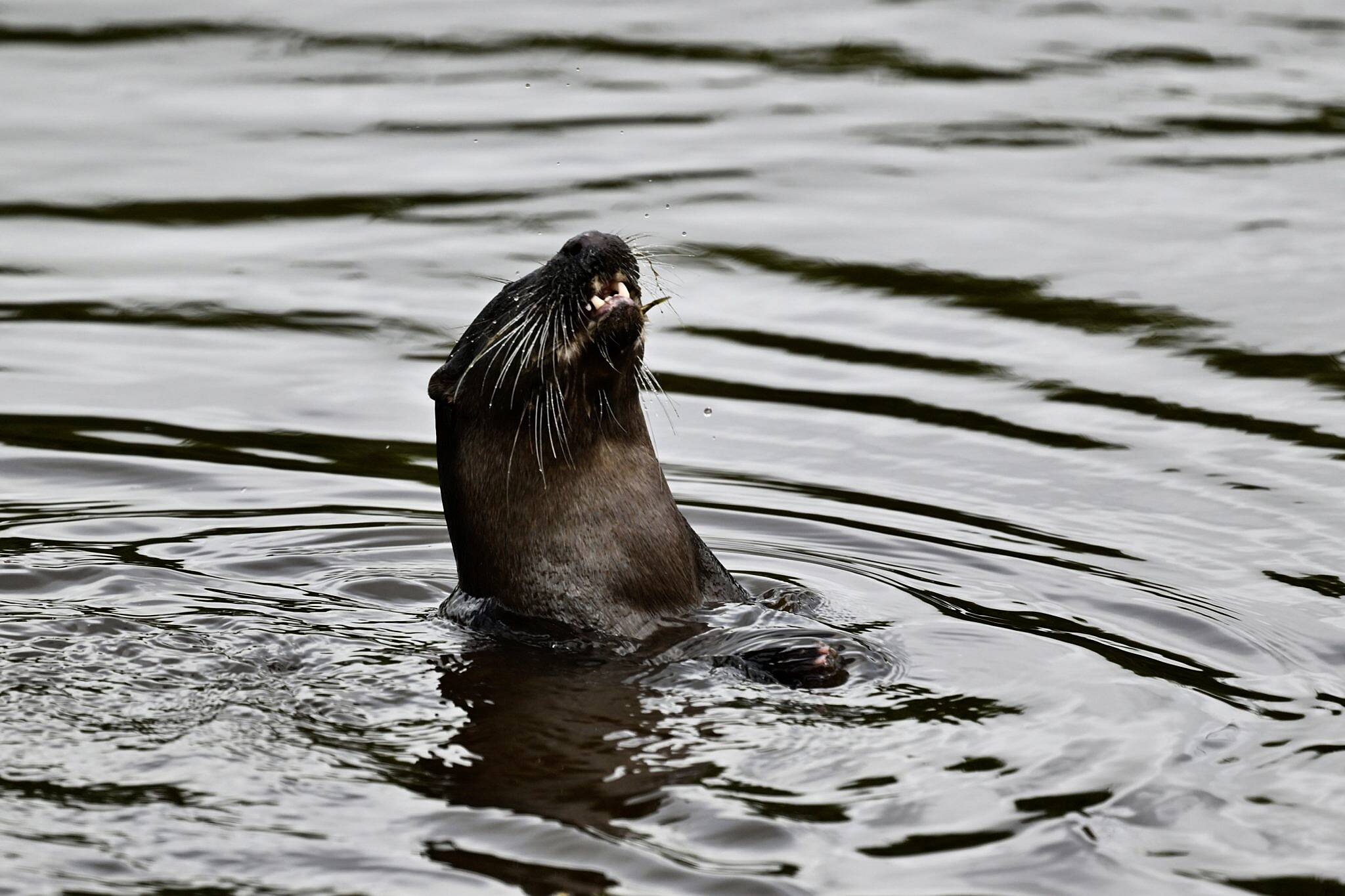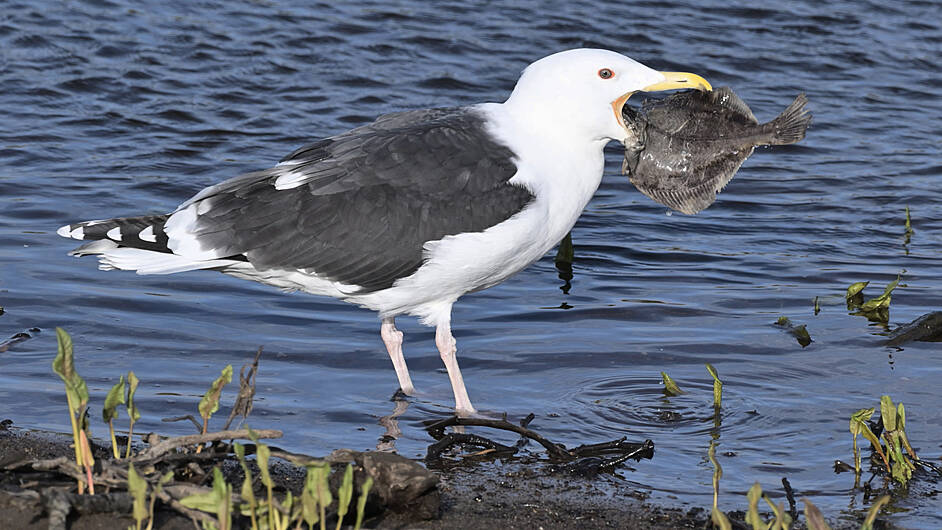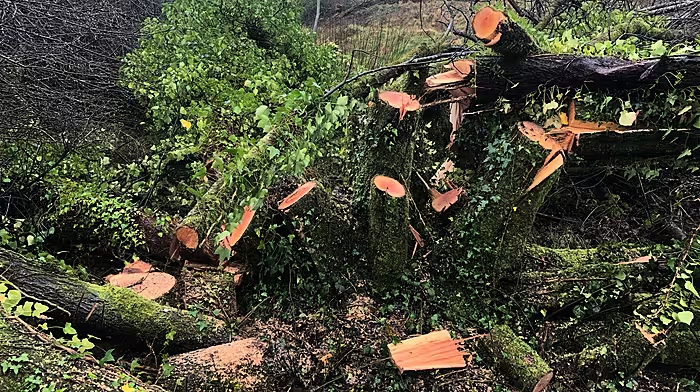
Kingfishers, herons, and otters are just some of the fabulous native species I’ve observed fishing in the rivers and lakes of West Cork.
The kingfisher’s method is remarkable: they perch on a branch over water, statue-still, moving only their head to gauge the position of fish below.
When ready, they plunge down with open wings to snatch their prey.
Herons employ a similar technique, standing silently at the water’s edge. However, instead of diving, they simply bend and extend their flexible necks to spear an unsuspecting fish with their beaks.
Otters, in contrast, glide almost effortlessly through the water, diving to pursue fish before surfacing triumphantly with their catch.
One of my most memorable experiences was sitting quietly on the banks of the Ilen in the dusky light, watching an otter hunt nearby.
After catching a fish, they would bring it to the surface, and I could hear the crunching sound as the fish was devoured, a truly special moment.
Many animals rely on our local rivers and lakes to sustain themselves.
With fish high on the menu; it made me wonder: what species of freshwater fish are they catching?
Fish figures
At the last official count in 2010, Ireland had only 29 species of freshwater fish; surprisingly, just 14 of those were native, with non-native species such as roach, dace, chub, and carp contributing to the total.
I hadn’t expected the numbers to be so low, and, moreover, several of these species are either extremely rare or highly localised.
As a result, we don’t actually have that many species of freshwater fish in West Cork.
Freshwater fish are divided into three groups. Some, like sticklebacks, spend most of their life in freshwater.
Others, such as smelt, usually reside in estuaries and coastal waters but move to tidal freshwater sections of rivers to spawn.
Lastly, there are fish like flounder, which spend most of their time in the sea but occasionally enter freshwater.
Classification becomes even more complicated when you consider the movements of adult fish, even those considered to spend the majority of their lives in freshwater.
They are subdivided into anadromous fish, where adults live in the sea and migrate into freshwater to spawn; such as salmon, and catadromous fish, where adults live in freshwater and migrate into saltwater to spawn; such as the European eel.
 An otter fishing in the River Ilen.
An otter fishing in the River Ilen.
Atlantic salmon
The Atlantic Salmon is an iconic species in West Cork, revered and closely associated with waterways such as the Glengarriff, Coomahola, Ilen, Bandon, and Argideen rivers.
They feed in the Atlantic Ocean when mature but return each year to the river where they were born to mate and spawn.
Their marine feeding grounds lie around the Norwegian Sea and off the coast of Greenland, so the distance they cover to return to Irish rivers is mind-blowing.
Arriving each spring and summer, they make their way upstream to spawn in gravelly river beds.
Salmon depend on unpolluted, well-oxygenated water, not only for spawning and egg development, but also to support healthy invertebrate populations for them to feed on.
Spawning times vary depending on the season and the river system but generally take place between November and January.
The female uses her tail to dig out a shallow nest for her eggs in the gravel, known as a redd, and males fertilise the eggs she lays before she carefully covers them over.
Juvenile salmon typically remain in the river for two to three years, progressing through various stages—from alevins to fry to parr—before they are ready to migrate to the sea as smolts.
New research
Numerous pressures face salmon, and their conservation status in Ireland is classified as vulnerable due to a decline in abundance.
In recognition of losses at sea, Inland Fisheries Ireland is participating in a new international research initiative in the Atlantic region: DiadSea.
The programme aims to develop strategies for protecting fish, such as salmon, that live in both freshwater and saltwater (diadromous species), a characteristic that makes their conservation particularly challenging.
A key component of the research involves mapping the locations of these fish in the ocean, identifying critical areas for their survival, and using latest models to predict how they will be impacted by climate change.
There are significant knowledge gaps, and closing these will be the first step in creating effective conservation plans for these iconic fish.
 Atlantic Salmon cover vast distances to return to where they were born to mate and spawn. (Photo: Shutterstock)
Atlantic Salmon cover vast distances to return to where they were born to mate and spawn. (Photo: Shutterstock)
Not just salmon
While salmon are emblematic of our rivers, many other fascinating fish play vital roles in the ecosystem and, of course, nourish cherished creatures such as otters.
The catastrophic fish kill in the Ilen River in 2021 primarily affected sea trout, salmon, eels, and flounder.
Flounder, a native flatfish, inhabit coastal waters, estuaries, and occasionally freshwater. Grey in colour, flounder are born round in shape.
As they grow, they develop their flat form, enabling them to blend into the beds of muddy estuaries.
Sticklebacks are our smallest native freshwater fish and the ones you would be most likely to catch with a net in ponds, rivers, and the small streams that feed into them.
We have two species in freshwater: the three-spined and the ten-spined stickleback. Sticklebacks are a common component of the kingfisher’s diet, which they eat headfirst to flatten the spines.
Food for thought
For non-anglers, freshwater fish are usually only glimpsed beneath the water or when caught by wildlife as a meal.
However, it is important to think about the unseen fish in the depths that depend on us to preserve our waterways, keeping them natural, clean, and unpolluted.
In turn, the species we love such as otters and kingfishers depend on those fish for their survival





